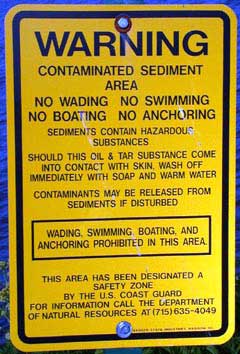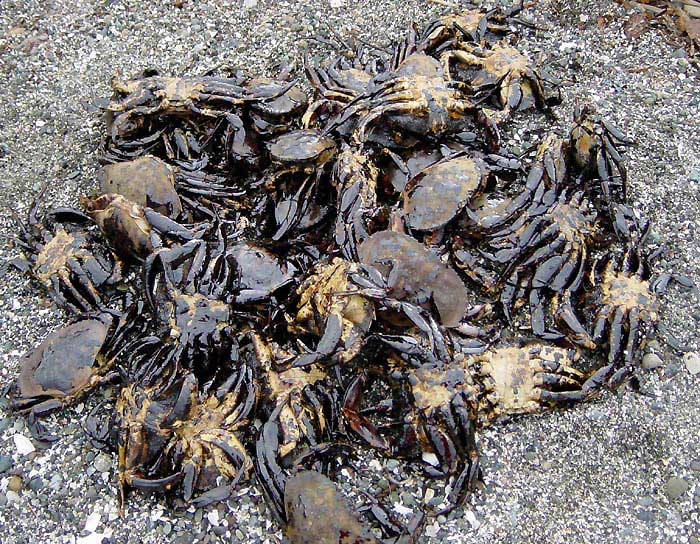Pesticides and Toxic Chemicals
Pollution Tutorial

Despite efforts to control it, contaminated runoff still results in conditions unhealthy for humans and aquatic organisms alike, requiring authorities to close beaches and fisheries.
Pesticides typically enter a waterbody through surface water runoff, often from a farm field or from neighborhoods where they are applied on lawns. Pesticides can also enter a waterbody as a result of “spray drift.” This occurs when the pesticide is sprayed over an area, and the wind blows some of the spray into a nearby waterbody.
Pesticides are designed to be toxic to a target organism, but they often kill other organisms as well. The insecticide azinphos-methyl, for example, is used to control insects such as biting mites and aphids. It is also very toxic to fish and birds, however. For the most part, today's pesticides do not build up in the tissues of animals — a process called bioaccumulation — to the extent that older compounds like DDT did. On the other hand, many of the compounds used today are toxic at very low concentrations.
Toxic chemicals, such as spilled oils and fuels in cities, are often washed off streets, down storm drains, and into waterbodies. Combustion of fuels in automobiles and factories introduces hydrocarbons and metals into the environment. They eventually end up in the water through atmospheric deposition or runoff. Industrial facilities without the proper means to control runoff can also contribute toxic chemicals to the aquatic environment. The type of chemical that is released depends on the type of manufacturing done at a facility. Other chemicals, such as solvents, paints, cleaning solutions and others, originate from marinas and boating activities.

Spilled oil that originates from cities and streets or that is poured down storm drains, can soak and kill aquatic organisms, such as these crabs.
Pollution Lessons
- Welcome
- A Brief History of Pollution
- Point Source
- Nonpoint Source
- Urban and Suburban Areas
- Agricultural Operations
- Atmospheric Inputs
- Forestry and Mining Operations
- Marinas and Boating Activities
- Nutrients
- Suspended Sediments
- Pesticides and Toxic Chemicals
- Bacteria, Viruses, and Trash
- Research, Monitoring, and Assessment
- Controlling Nonpoint Source Pollution
- What You Can Do
- References
- Roadmap to Resouces
- Subject Review (PDF)
Categories of Pollution
Pollutants from Nonpoint Sources
